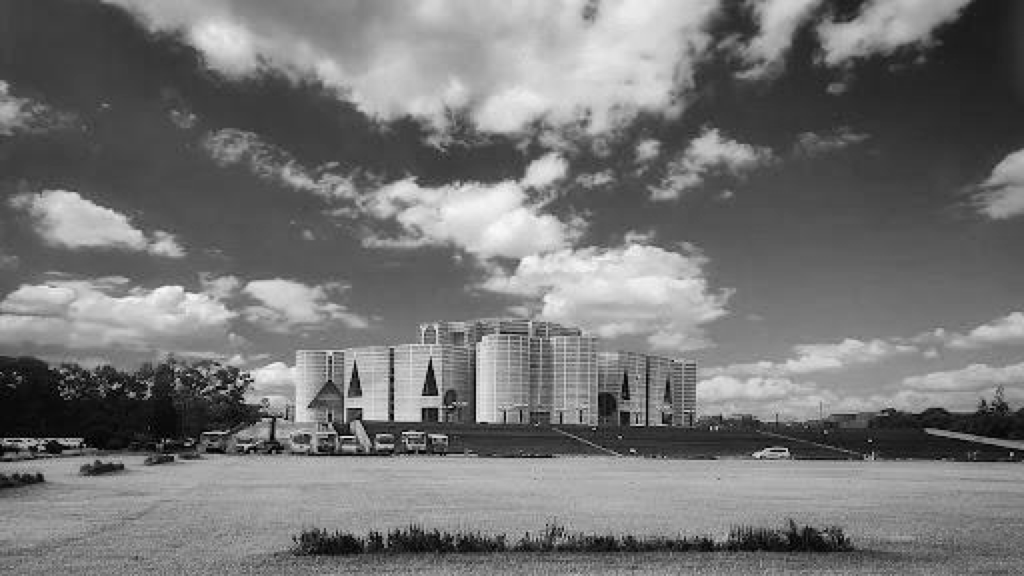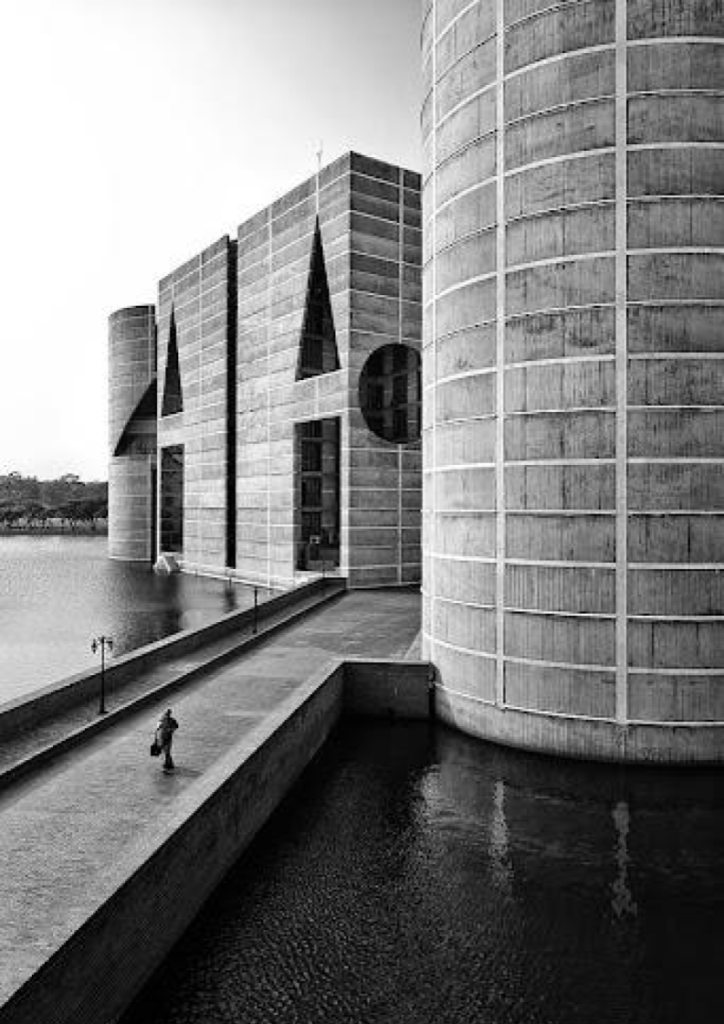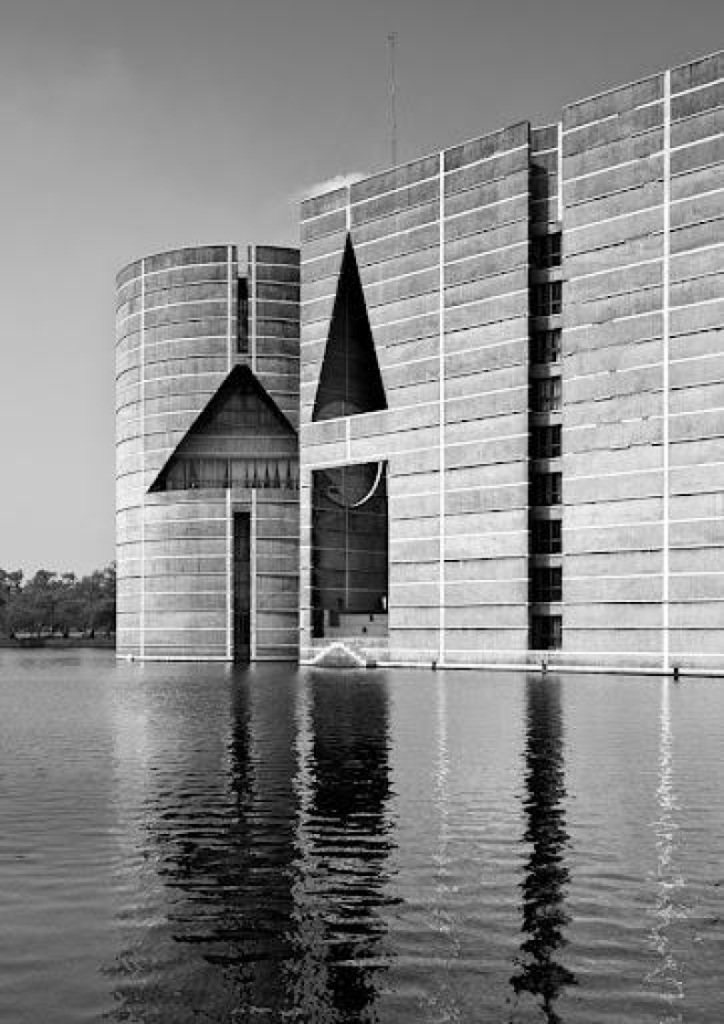Enshrining Democracy in Concrete
By Ar. Shivanie Khanka
Bangladesh emerged from the ruins of war as a new nation on 16 December 1971. It was a critical era of national liberation in many ways and the seeds of contemporary architecture in Bangladesh were sown during that period. The significance of the Capitol Complex is inseparably linked with the national and political movement of the citizens of Bangladesh. It is this harmony between architecture and cultural norms, often working at illusionary levels, that builds the identity of the country.

Source – Wikimedia Commons | Shahidul Hasan Roman
Sher-e-Bangla Nagar, the home of all legislative activities in Bangladesh was designed by architect Louis I Kahn. The Capital Complex is recognised as one of the greatest works of Kahn and the largest legislative complex in the world. Louis Kahn transcribed the foundation of his design for this august building in vernacular and monumental archetypes of the region. This was a mammoth project that would symbolize the people of this diverse country that was building itself up from the ruins of war. As a citizen of this newfound democracy, this building would symbolize the everlasting idea of keeping people first. It embodies not only the end of a historic process but also a means to a new history for the nation.

Source – Wikimedia Commons | Naquib Hossain

Source – Wikimedia Commons | Naquib Hossain
Despite the various tragedies the country went through during the twenty years it took for this colossal complex to build, it was built. This complex paved the way for new opportunities for this nation. In the 1960’s Bangladesh’s first school of architecture was established and in 1972 the Institute of Architects of Bangladesh. It stimulated the birth of architecture as a profession in a country where the most laborious work was carried out by unskilled individuals. It influenced students and citizens. A big boom of building trade took place in Bangladesh in the years that followed the completion of this massive complex.

Source- Wikimedia Commons| Naquib Hossain
The dynamic concept for a National Assembly building in Dhaka against its setting of low landforms of rice fields dominates the landscape like a fortified citadel. The ‘artificial lake’ surrounding the main building acts like a moat that accentuates the elevation of the hall and blows its reflection gently onto the water. As a true modernist architect, Kahn molded the building with volumes of tones of concrete that sits resolutely on water. Two cardinal materials, concrete, and bricks were shown at their best bridging Kahn’s vision of harmonizing space and light. Concrete lined with white strips of marble, marked by enormous geometric circular openings, transfusion of interlinking spaces, and complex overlapping structures penetrate the building like the rays of the sun. For twenty years this project provided employment to countless citizens who inscribed this symbol of democracy with their own hands. The assembly building received the Aga Khan Award for Architecture in 1989.

Source – Wikimedia Commons | Naquib Hossain

Source – Wikimedia Commons | Naquib Hossain
With the aid of “Professor Khan’s” genius, a new and contemporary identity of Bangladesh was created with a modern spirit. Throughout the political, social, and economic turmoil, the people of Bangladesh have maintained their sane judgment on the ideals of democracy and justice and recognize it in the Sher-e- Bangla Nagar Complex that now stands as a tangible representation of their vision.
Ar. Shivanie Khanka is a creative and versatile individual, who is passionate about research, design, and photography. For her, architecture is the expression of ideas and thoughts that create a different meaning for each design.
